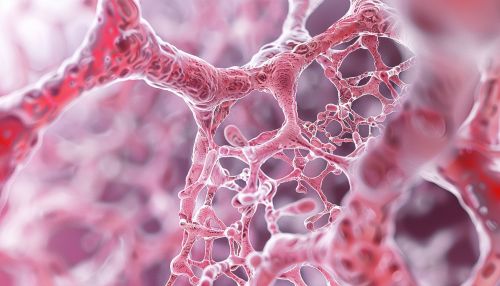Fibrin
Introduction
Fibrin is a fibrous, non-globular protein involved in the clotting of blood. It is formed by the action of the protease thrombin on fibrinogen which causes it to polymerize. The polymerized fibrin together with platelets forms a hemostatic plug or clot over a wound site.
Structure
Fibrin is a complex molecule with a three-dimensional structure. The primary structure of fibrin is a sequence of amino acids joined together by peptide bonds. The secondary structure is formed by hydrogen bonds between the amino acid chains, creating a helical shape. The tertiary structure is the overall three-dimensional shape of the protein, formed by interactions between the side chains of the amino acids. The quaternary structure is the arrangement of multiple protein molecules into a multi-subunit complex.


Function
The primary function of fibrin is to form a blood clot over a wound site, preventing further blood loss and providing a matrix for new tissue growth. This process is known as hemostasis. Fibrin also plays a key role in inflammation and tissue repair. During inflammation, fibrin acts as a chemotactic agent, attracting immune cells to the site of injury. During tissue repair, fibrin serves as a scaffold for the migration and proliferation of cells involved in wound healing.
Fibrinolysis
Fibrinolysis is the physiological breakdown of fibrin by the enzyme plasmin. This process is crucial for the removal of blood clots and restoration of blood flow to the tissues. Dysregulation of fibrinolysis can lead to pathological conditions such as thrombosis and embolism.
Clinical significance
Fibrin plays a crucial role in many pathological conditions, including cardiovascular diseases, cancer, and inflammatory diseases. In cardiovascular diseases, excessive fibrin formation can lead to the formation of blood clots, resulting in conditions such as deep vein thrombosis and stroke. In cancer, fibrin can promote tumor growth and metastasis. In inflammatory diseases, fibrin can contribute to tissue damage and organ dysfunction.
